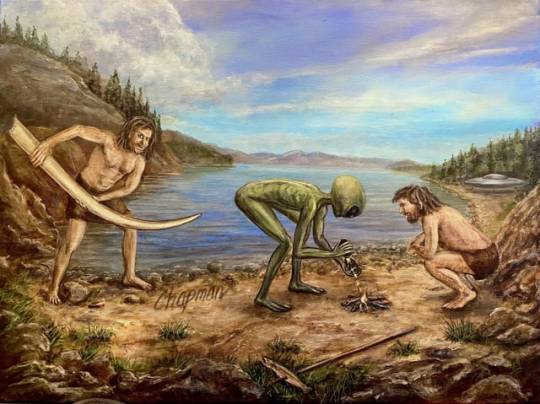#Chapman
Explore tagged Tumblr posts
Text










Leverage S03E15 The Big Bang Job.
#leverage#eliot spencer#chapman#christian kane#michael e rodgers#ugh such a good scene#ghostly'sgifs
233 notes
·
View notes
Text







Leverage 3x15 - "The Big Bang Job"
#christian kane#leverage#eliot spencer#chapman#michael e. rogers#the big bang job#IMAGINE the hubris of watching all of that go down and still going‚ hmm he doesn't like guns‚ how could he shoot me?
255 notes
·
View notes
Text


hehe
136 notes
·
View notes
Text
Not my typical content, nothing bellow diamond related but i started watching orange is the new black and I love lesbians 💞💞💞💞

cuties
#vauseman#orange is the new black#alex vause#piper chapman#vause#chapman#oitnb#lesbian#fanart#wlw#art#netflix
140 notes
·
View notes
Text
Chapman: "Sir, the Andalite Bandits are here."
Visser Three: <What?! But they were just here this morning!>
Chapman: "Maybe they were hoping to attack us again while we were busy making repairs?"
Visser Three: <No matter! I will deal with them! Guards! To me!>
Chapman: "You killed all your guards after they failed to stop the Bandits from escaping earlier."
Visser Three: <WHAT?! Why don't I have new guards yet?!>
Chapman: "I am sorry Visser, but it has only been a few hours, we haven't had time to fill out the necessary paperwork!"
21 notes
·
View notes
Photo

Herodotus on Burial in Egypt
Herodotus' section of his Histories on burial in ancient Egypt (Book II.85-90) is an accurate description of Egyptian mummification, but he purposefully omits the spiritual significance of embalming in keeping with his commitment to refrain from discussing the religious beliefs of other cultures. The spiritual aspect of embalming, however, was central to the practice and is addressed indirectly.
This is not to say that Herodotus' account is wrong, only that it may seem incomplete as he clearly explains how embalming was practiced during the Late Period of Ancient Egypt (525-323 BCE), but not the reason for it. Embalming was intimately associated with Egyptian religion, which Herodotus seems to avoid addressing for his own reasons. Herodotus (l. c. 484-425/413 BCE) makes his policy on religious discussions clear, however, earlier in Book II when he deals with the sacred aspect of animals in Egypt:
All the animals in Egypt are regarded as sacred. Some are domesticated, and others are not, but if I were to explain why some animals are allowed to roam free, as sacred creatures, my account would be bound to discuss issues pertaining to the gods, and I am doing my best to avoid relating such things. It is only when I have had no choice that I have touched on them already.
(II.65)
Herodotus actually addresses religious issues frequently throughout his Histories as in the case of Croesus (I.47-91), Cyrus (I.124-126), Persian religious customs (I.131), Themistocles' speech to the Athenians (VIII.109), earlier in his discussion of the Egyptians (II.36-37) and elsewhere. When he claims to be avoiding religious issues, then, what he means is he will discuss practices and events relating to the gods but will not comment on their spiritual significance, though he sometimes slips and does this as well.
It is possible, as some have claimed, that he simply did not understand the religious significance of embalming to the Egyptians, but it is far more likely that he omits commentary for any number of reasons including the personal nature of religious belief and how a discussion of Egyptian beliefs might affect how his audience received the culture. His passage on Egyptian burial is in keeping with his tendency to emphasize positive aspects of a culture he wants his Greek audience to either admire (Egyptians) or understand better (Persians) in the same way he advances a negative narrative concerning those he does not seem to care for (Lydians).
In his section on burial in Egypt, then, he stays close to the actual practice in the interests of informing his readers on funerary rites but omits the deeper meaning as it might have offended the Greeks' own understanding of death, burial, and the afterlife. A reflection on the structure of the chapters in his burial passage, however, suggests he knew the spiritual significance of his topic and did address it, only obliquely.
Spiritual Significance of Mummification
The Egyptian understanding of the soul was far more complex than the Greek. The Egyptians understood the soul as being comprised of nine aspects:
Khat was the physical body.
Ka was one's double-form.
Ba was a human-headed bird aspect, which could speed between the earth and the heavens.
Shuyet was the shadow self.
Akh was the immortal, transformed self.
Sahu and Sechem were aspects of the Akh.
Ab was the heart, the source of good and evil.
Ren was one's secret name.
After death, the ka and ba needed to be able to recognize the khat in order to travel from the other realm to the tomb to receive the prayer offerings and sustenance that enabled their continued existence, and comfort, in the afterlife. The deceased needed to be remembered by the living in order for their akh to remain vibrant in the paradise of the Field of Reeds and the deceased needed to be shown proper respect upon their departure from earth for the same reason. Mummification and an elaborate sarcophagus in the image of the deceased were thought to provide for the soul in this.
The practice of mummification also served as a cleansing ritual, purifying the body of the sins of life in preparation for the soul's journey to the Hall of Truth to stand in judgment before Osiris, Lord of the Dead, and the Forty-Two Judges. Scholar Jan Assmann explains:
Guilt, accusation, enmity, and so forth are treated as forms of impurity and decay – as, so to say, immaterial but harmful substances – that must be eliminated so as to transpose the deceased into a condition of purity that can withstand decay and dissolution. Vindication was moral mummification. When the embalmer's work on the corpse was done, the priests took over and extended the work of purification and preservation to the entirety of the person. The Egyptian word for 'mummy' also meant 'worthy' and 'aristocrat'. In this last stage of the mummification process, the deceased experiences the Judgment of the Dead and received the aristocratic status of a follower of Osiris in the Netherworld.
(Chapman, 81)
If the body of the deceased was not treated with the proper care, the soul might return to earth to haunt the living, causing all kinds of problems, until that wrong was righted. Scholar Sarah Lynn Chapman notes how the judgment of the soul in the afterlife was believed to begin during the embalming process when the sins of the righteous were removed with the organs that would have been tainted by those sins, thereby making the soul's spiritual heart lighter and prepared for judgment; for the unrighteous, however, the embalming process would have been a torture as they were thought to cling to their sins and so the removal was a painful experience.
Continue reading...
31 notes
·
View notes
Text

Chapman
52 notes
·
View notes
Text




𝓐𝓻𝓽𝓱𝓾𝓻 𝓪𝓷𝓭 𝓐𝓵𝓮𝓷𝓪
#Chapman#ts4#the sims 4#sims 4#ts4 screenshot#simblr#ts4 edit#ts4 character#ts4 cc#ts4 challenge#sims 4 portrait#sims 4 cc#sims 4 screenshots#my sims#sims community#sims 4 poses#sims story#sims 4 gameplay#ts4 couple#ts4 legacy
14 notes
·
View notes
Text

UP 6302, Chapman, NE
Union Pacific train MESEZ with Mobile Laboratory Car UPP210 behind the power is at Chapman as the Memphis originating train ran via the Falls City Sub and Wimmer Wye in the days when the Marysville Sub was still being double tracked.
2-12-1997
24 notes
·
View notes
Text




Leverage 3x15 - "The Big Bang Job"
#christian kane#leverage#eliot spencer#alec hardison#aldis hodge#chapman#michael e. rogers#damien moreau#goran visnjic#the big bang job#what if moreau had come out of the sauna fully nude#THAT would have been a power play
264 notes
·
View notes
Photo



This is a magazine shot of Georgina Chapman doing her best impression of the early 20th. century Italian heiress, Marchesa Luisa Casati.
"Marchesa's Moment" Georgina Chapman as Marchesa Luisa Casati by Peter Lindbergh for Harpers Bazaar March 2009.
Known for having eccentric taste in fashion (she often wore live snakes as jewelry and kept pet cheetahs in her many residences), she was obsessed with the prospect of death after losing so many loved ones at an early age and commissioned artists to immortalize her through works of art.
She was, at once, frightening and magnetic. A complex and dark character who was also intensely private despite being a socialite and a muse to many. And yes, the fashion line Marchesa is named after her. (x)
#2009#marchesas moment#fashion shoot#peter lindbergh#georgina chapman#bazaar march#harpers bazaar#march 2009#snake#chapman#lindbergh#luisa casati#marchesa luisa casati#marchesa casati#marquise casati#Marchesa Casati Stampa#casati#Luisa Amman#Luisa Adele Rosa Maria Amman#Luisa Adele Rosa Maria von Amman#luisa amman casati#amman#Luisa Casati Stampa di Soncino#Luisa Marchesa Casati Stampa Di Soncino#Marchesa Casati Stampa di Soncino#Marquise Casati Stampa di Soncino
29 notes
·
View notes
Text


Chapman
64 notes
·
View notes
Text

hey. British people drama NOW
#g fighter#g gundam#mobile fighter g gundam#30thgundamfight#Manon Chapman#Gentle Chapman#gundam#communication#YAYYYYYYY#Chapman#Manon
4 notes
·
View notes
Text
Visser Three: <An Andalite once tried to test me. I ate his liver with some Fava beans and a nice Chianti.>
Chapman: "Just his liver?"
Visser Three: <Well I would have eaten the rest of him, but the one that always morphs the large feline jumped on me before I could.>
Chapman: "Don't worry sir, you'll get him next time."
9 notes
·
View notes

